Top 10 city escapes in China
By Wang Zhiyong & John Sexton
Only rarely do we make a trip that embodies the true spirit of traveling. Sometimes a city break fits the bill. We hope our selection of cities will help you find your dream escape. We have deliberately excluded the hustle and bustle of metropolises such as Beijing and Shanghai.
1、Guilin
Guilin (桂林) in Guangxi Province is to home to some of the most spectacular scenery in China. The dramatic karst peaks in and around the city are most people's idea of a "typically Chinese" landscape.
In recent years, the nearby town of Yangshuo (阳朔) has become very popular with backpackers and a thriving industry of hostels, hotels, restaurants, bars, and trekking companies has grown up there. The best way to get to Yangshuo is to take a boat down the Li River (漓江) from Guilin.
Bamboo rafting on the river or cycling through the countryside are ideal ways to take in the scenery. For the more adventurous, local companies will take you rock climbing or organize a trip down one of the many local cave systems.
To experience the local culture why not take a trip on the river with the cormorant fishermen or take a class in calligraphy or cookery.
For those in the mood for a show there are regular outdoor performances of Zhang Yimou's folk music extravaganza, "Third Sister Liu."
2、Lijiang
The Old Town of Lijiang (丽江) is a UNESCO World Heritage Site located in the north of Yunnan Province.
Lijiang lies 2,400 meters above sea level surrounded by jagged snow tipped peaks. The wooden house, tea houses and stone pavements of the old town may not have changed since the town was capital of the ancient Naxi Kingdom. Ethnic Naxis still make up 70 percent of the population and the Naxi language is widely spoken. The ancient Naxi system of picture writing still puzzles and fascinates scholars. In ancient times the city flourished as a tea-trading center and merchants came from far and wide with horse and mule-trains loaded with tea.
Among of the charms of the old town are the mini-canals fed from the Jade Dragon River which flows from the Jade Dragon Snow Mountain. Traditionally the water in the upper part of the river was used for drinking, the middle part of the river for washing vegetables and the downstream area for washing clothes.
Be warned that in recent years over-development of tourism has rather disturbed the serenity of Lijiang. Evenings in the old town can be rowdy, with groups of mainly Chinese tourists staggering around, the very much the worse for wear after unloading their money in the over-priced bars.
3、Hangzhou
As the old Chinese saying goes: "Above is heaven, below are Hangzhou (杭州) and Suzhou." Hundreds of thousands of tourists visit Hangzhou each year, mainly attracted by the famous West Lake (Xi Hu) area with its placid waters, beautiful gardens, reflecting pools, lavish temples and lakeside teahouses.
Founded 2,200 years ago Hangzhou is one of the cradles of Chinese civilization. The city began to prosper and flourish in the Tang Dynasty, and had its political heyday in the Southern Song Dynasty when it was China's capital.
There are many famous historical and cultural sites around West Lake including Solitary Hill, Six Harmonies Pagoda and Lin Yin Temple. Hangzhou is also well known for its silk and tea and a trip to the city can be easily combined with a visit to a tea plantation in the hills near the West Lake.
4、Suzhou
Suzhou (苏州) is famed for its beautiful gardens and waterside architecture. The Classical Gardens of Suzhou were included in the UNESCO World Heritage List in 1997.
Suzhou was the capital of the kingdom of Wu from the 12th to 4th centuries BC. More recently, it was a center of the silk trade renowned for its gardens and canals. It has been called the Venice of the East. Suzhou was historically a haven for scholars, artists, and skilled craftsmen, and this is still the case today.
Suzhou has managed to retain much of its traditional Chinese look and many parts of the old downtown area are very beautiful. Wandering off the beaten path and into some of the old neighborhoods can be very rewarding. Suzhou is very much a water town criss-crossed with canals and bridges, and you can still see traces of the old-style lifestyle that was centered around the canals.
5、Sanya
On the southern tip of Hainan Island – China's Hawaii - Sanya's (三亚) main attractions are its weather and its beaches.
Most people head to Dadonghai beach which is a short taxi ride from the city center. There is plenty of accommodation in the area from quite up-market hotels to cheap guesthouses. The beach has a couple of reasonable bars where you can shelter from the sun and marvel at the sight of entire coach parties of Chinese tourists dressed in identical Hawaiian shirts with matching shorts.
Some way to the east of the city is Yalong Bay which has a longer beach than Dadonghai, but unless you are staying in one of the expensive hotels there, you will probably find Dadonghai has more to offer.
For evening eating, the best options are in town. Stick to the seafood and you won't go far wrong.
In recent years Sanya has become a popular destination for Russian tourists and Cyrillic lettering on restaurant and bar signs is a common sight.
You may be accosted by local women trying to sell you strings of pink and black pearls. The pearls are genuine and its possible to find quite good bargains. But remember that they are being sold on the street because they are not perfectly spherical so it's unlikely you will be able to pass them off as an expensive present.
6、Xiamen
Xiamen (厦门), also known as Amoy, is a coastal city that, despite extensive modernization, has retained its colonial era shopping arcades and public buildings.
Chinese people tend to value Xiamen's clean air and modern buildings but overseas tourists will probably prefer to potter around the old arcades in the Zhongshan Road area.
The city is built on an island and there are a number of fine sandy beaches although the heavy shipping traffic means the water is not the best for swimming.
A must-do is to take the ten-minute ferry trip to the tiny island of Gulangyu, which has dozens of colonial mansions built in a variety of styles. The island is a car-free zone so you can enjoy a carefree stroll - a rare pleasure in China. Gulangyu is also called the musical island because almost every household owns, and plays, a piano
Xiamen University's large, stylish campus, one of the finest in China, is well worth a visit. Next door is Nanputuo Buddhist Temple, which was founded in the Tang dynasty. Today the temple is one of China's main Buddhist training centers, and if you pay a visit to the nearby Internet cafes you will be amused to see novice monks playing rather bloodthirsty video games.
Xiamen was the frontline during a military confrontation between the mainland and Taiwan 50 years ago. Chinese tourists like to take a boat trip to look at Jinmen Island which, although just a few kilometers away, remains under Taiwanese control.
7、 Lhasa
Lhasa (拉萨)is rightlyone of the most featured and dreamt-about cities in the world. This is not only because of its remoteness, its high altitude (3,650 meters), but also because of its impressive heritage of over a thousand years of cultural and spiritual history that has helped to create the romantic and mysterious Tibetan religion.
Differing from the inland cities and other places in Tibet, Lhasa is unique with an allure all of its own. In the Tibetan language, Lhasa means the Holy Land or the "Land of the Gods." It is the center of Tibet's politics, economy and culture. The splendor and grandeur of the Potala Palace in Lhasa remains a world-famous symbol of the enigmatic power of politics and religion in this region.
Non-Chinese nationals are required to obtain a special permit to visit Tibet. Generally the period from March to October is the best time to visit Tibet. Since Lhasa is located at such a high altitude it is wise to be prepared before starting your journey. Taking the train, the highest plateau railway in the world, is a fabulous new option, giving the opportunity to see hitherto unseen mountain scenery and shake off altitude sickness.
Here are some attractions might be categorized as must-go places: Potala Palace, Jokhong Monastery, Sera Monastery, Drepung Temple and Norbulinka Palace. Lhasa's original look and old lifestyle are largely intact at Barhkor Street in the old part of Lhasa, where pilgrims walk around Jokhang Temple while turning prayer wheels in their hands through centuries. Here you can also enjoy bargaining with the local Tibetan vendors for the handicrafts which are rare to be seen elsewhere in the world.
8、Kashgar
Kashgar or Kashi (喀什) is China's most westerly city and lies in the heart of Central Asia at the junction between two branches of the old Silk Road. Borders with Pakistan, India, Ketcte are just a few hours drive away.
Kashgar's Old City was known as the best-preserved traditional Islamic city in central Asia and was a major tourist attraction. But following the 2008 Sichuan earthquake, the city authorities, citing safety worries, began a controversial renovation project that some critics say will destroy the character of the old town.
The Id Kah Mosque in the center of the city is the largest mosque in China. Although it's architectural style is rather plain, it is worth a visit.
The finest example of Islamic architecture, in the area is the tomb of Abakh Khoja a 17th century tiled mausoleum 5 km from the city centre.
Another must-do is a trip to Kashgar's traditional bazaars. The vast covered market that sells traditional goods such as carpets, hats and knives is open every day. Every Sunday there is a livestock market which is a lot of fun.
A popular trip in the Kashgar area is to take the bus to Lake Karakul and spend a night or two in a yurt. The lake is nearly 4000 meters above sea level, so if you are prone to altitude sickness skip this excursion. If you decide to go, you will be rewarded with spectacular views of snow covered mountains and the eerie stillness of the clear blue lake.
9、Pingyao
Pingyao (平遥) in central Shanxi Province is one of the best-preserved ancient cities in China. Its appearance has remained largely unchanged since the Ming and Qing dynasties and it is most notable for its six-kilometer city wall protected by a moat.
The history of Pingyao goes back 2,700 years, when it was founded during the reign of King Xuan (827-782 BC) of the Western Zhou Dynasty.
Within the city, there are hundreds of well preserved courtyard house built of black bricks and grey tiles. Among noteworthy sights are the Shuanglin Temple, built in 571, Xiaoxu Temple, built in 657, and the Huiji Bridge, built in 1671.
10、Macau
Macau (澳门) is just forty miles west of Hong Kong, across the Pearl River Delta. Although known as China's Las Vegas because of its 40 casinos, Macau is rich in other attractions and oozes atmosphere, thanks to hundreds of years of fusion between European and Chinese cultures.
Macau is a fascinating place to just stroll around as it is packed with churches, temples fortresses and other old buildings displaying a fascinating mix of Portuguese and Chinese features. Explore the maze of narrow alleyways in the old town and watch the people of Macau working and running their businesses. Other options are a visit to a sauna, the greyhound track or the Macau Jockey Club. If you are brave enough, you can risk the 233m bungee jump (the highest in the world) from the Macau tower. And don't forget to sample Macau's unique cuisine - a fusion of Portuguese and Chinese styles.
 0
0 



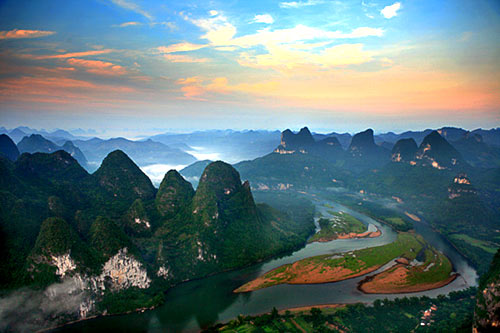
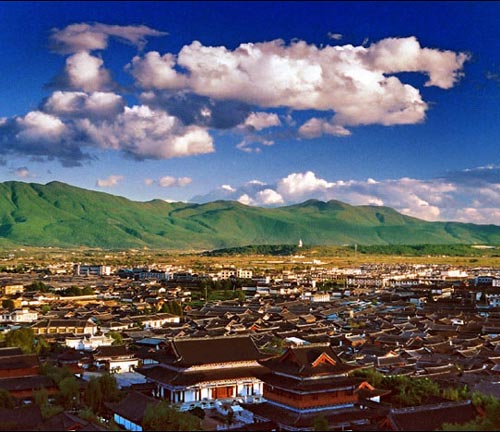

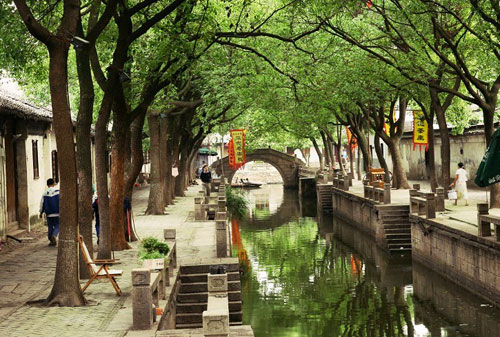
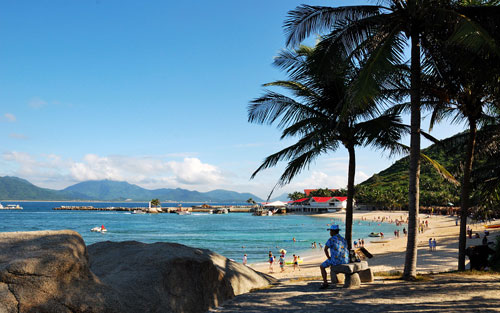
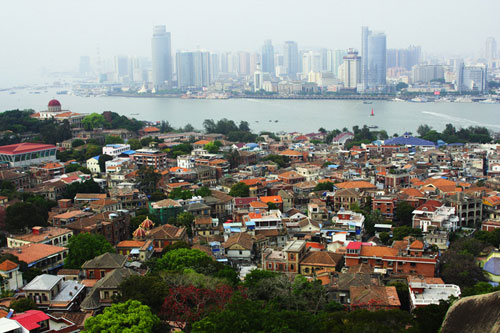

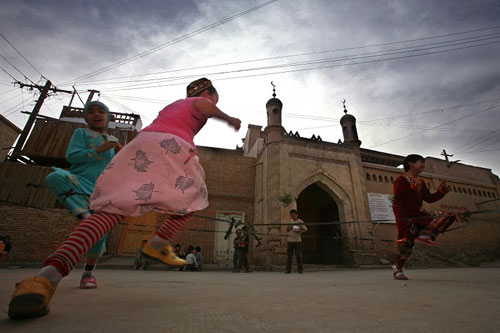
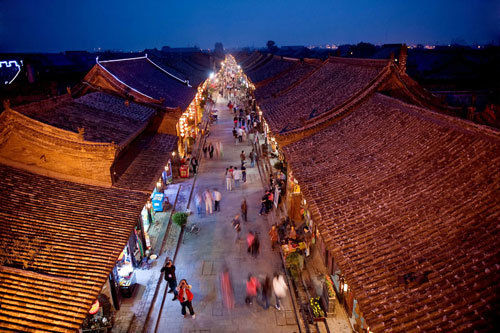
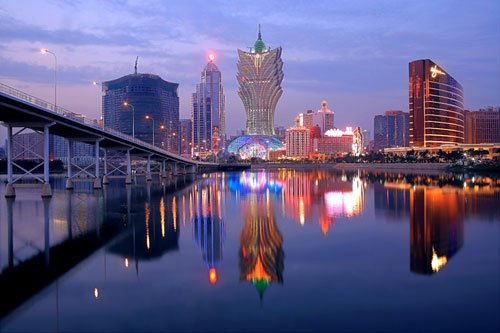





Go to Forum >>0 Comments